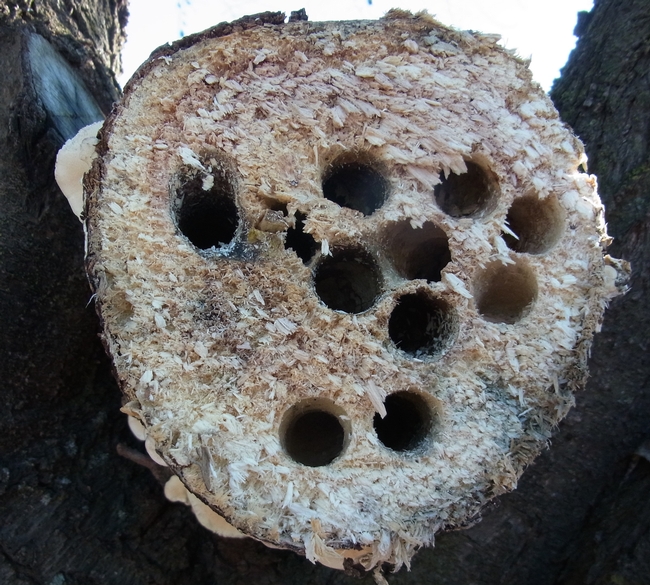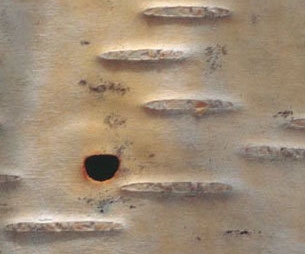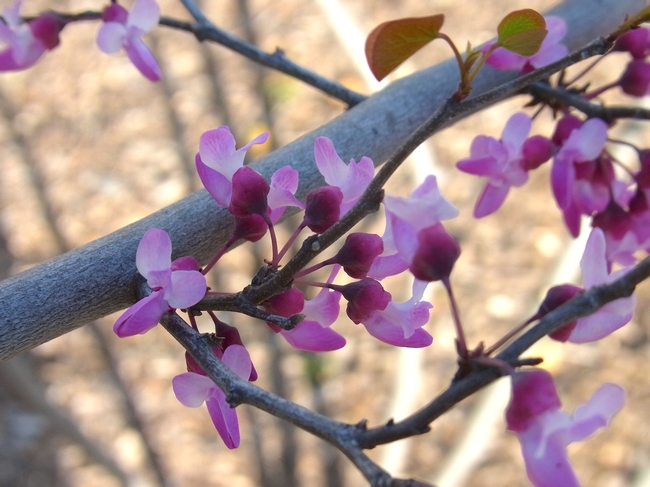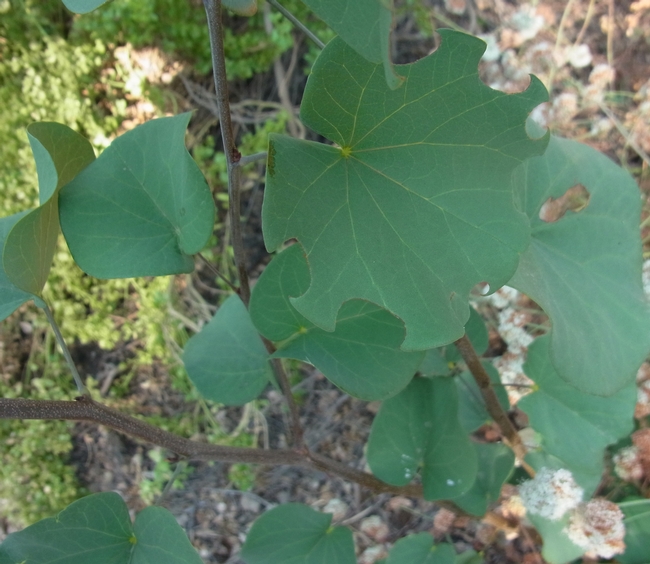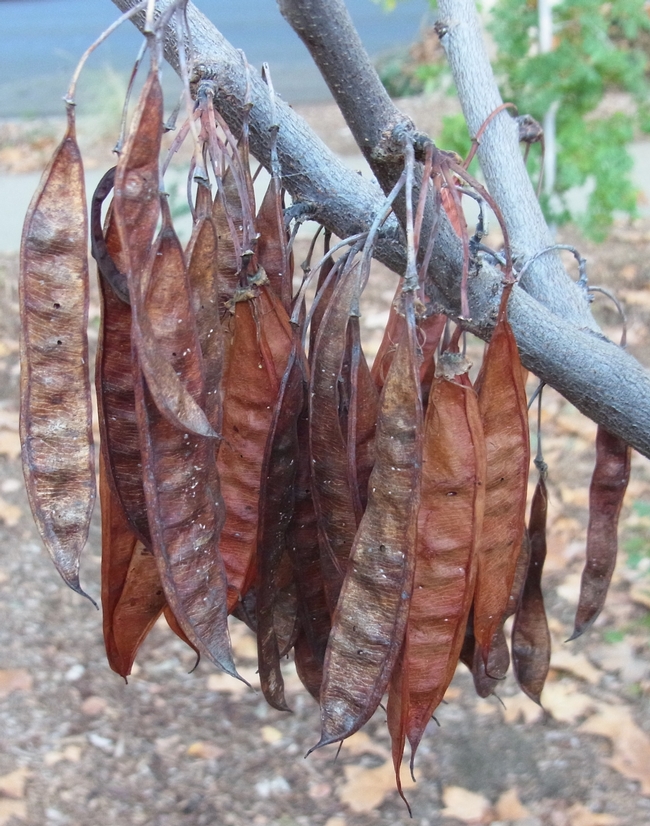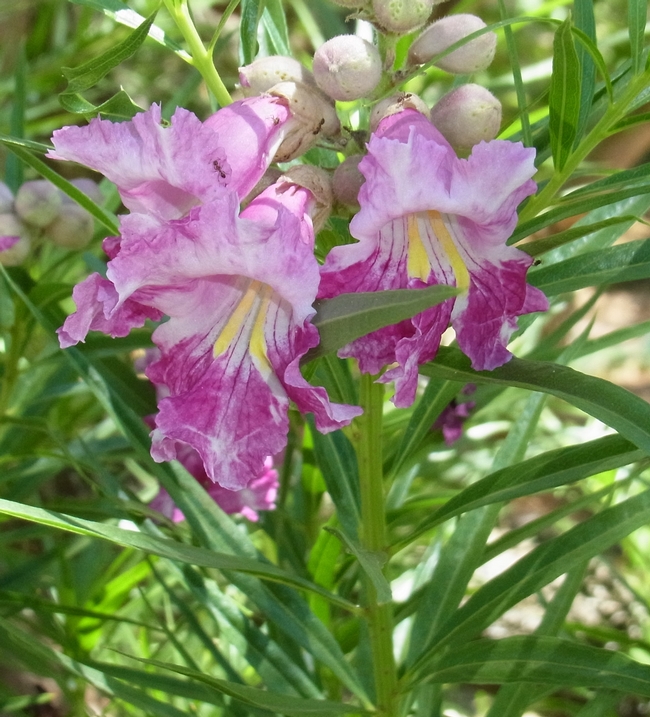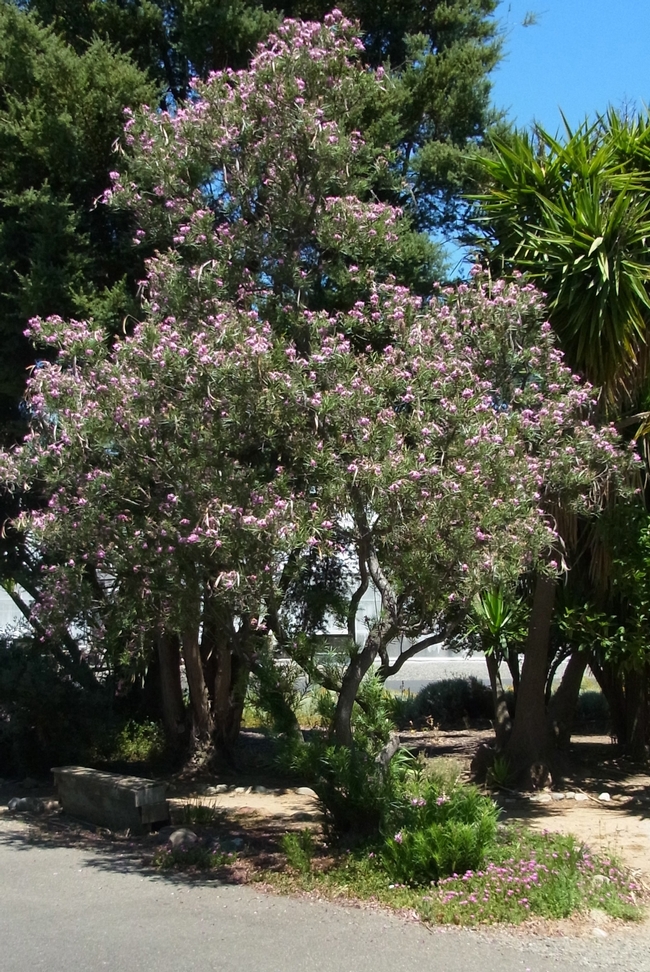Vally carpenter bee, Xylocopa varipuncta, nests in apple. Each gallery is about one-half inch across.
Bronze birch borer, Agrilus anxius, exit hole in white birch. Notice the 'D' shape of the hole, which is about one-quarter inch wide, that is created by the insect's flat head.
European white birch, Betula pendula, is widely planted in the Sacramento area. It is a riparian species that did well before water metering and drought led homeowners to restrict lawn watering. The past several years of dry weather have focused careful attention on landscape water use; unfortunately borers tend to attack drought-stressed trees.
What are some bee-friendly small trees that can be substituted for birches? There are two small trees that do well in much of California under low water regimens and also provide for bees.
I've mentioned the first, western redbud (Cercis occidentalis), many times on this blog. Its attractive flowers are in bloom right now, but this plant's primary value for bees is the foliage. Leafcutter bees use this tree's leaves for nest-building material, and we've planted it throughout the Haven to ensure an ample supply. It's a UC Davis Arboretum All-Star that reaches about fifteen feet in height and grows in full sun to light shade. It tends to have a shrubby form but can be pruned into a tree shape. It also has interesting seed pods that persist through the winter.
Western redbud, Cercis occidentalis, flowers
Leafcutter bee activity on western redbud, Cercis occidentalis. The female cuts a 'C'shaped leaf piece to cover each egg and its provisions.
Western redbud, Cercis occidentalis, seed pods. Click on the image to enlarge and you'll see small holes in the pods, indicating feeding by a seed weevil.
Another less common native tree that's also a great bee resource is desert willow, Chilopsis linearis. As the name suggests, it is native to the desert areas of California and does well in the hotter, drier parts of the state. The showy flowers of this fifteen to twenty foot tree appear in spring and continue on and off through the summer.
Desert willow, Chilopsis linearis, flower
Desert willow, Chilopsis linearis, in full bloom
Another small native tree is California buckeye, Aesculus californica. This one is noticeable because it loses its foliage in mid-summer as an adaptation to our summer-dry climate. Unfortunately this plant's pollen and nectar are toxic to honey bees, so it is not recommended for bee gardens.
